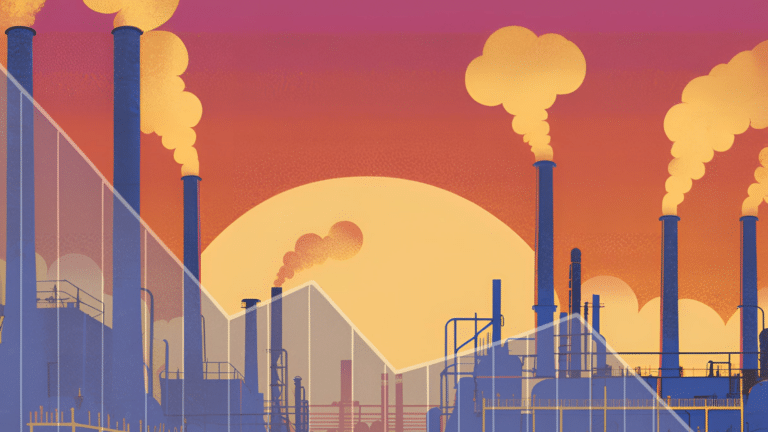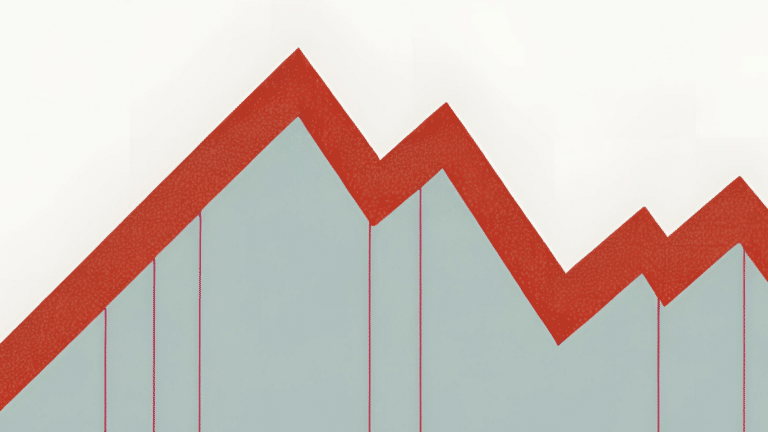China Halts U.S. LNG Imports Amid Tariff War
China has ceased importing liquefied natural gas from the United States since early February, as the ongoing tariff war impacts energy trade.
Current Access Level “I” – ID Only: CUID holders, alumni, and approved guests only
Q&A by Kaushik Deb & Abhiram Rajendran • October 19, 2022
In the latest change to the production targets of its member countries, the Organization of the Petroleum Exporting Countries (OPEC) and its ten oil-exporting partners (together known as OPEC+) announced that they will cut oil production by 2 million barrels per day (b/d) starting in November 2022.[1] This represents the largest reduction in production targets since the alliance instituted a historic 9.7 million b/d cutback in May 2020 to stabilize oil markets following the collapse in demand due to COVID-19. OPEC+ had gradually unwound that cutback between August 2021 and September 2022, before making a slight reduction in the target for October 2022 and its latest, far more substantial cut
The members of the coalition also agreed to extend their alliance to December 2023.[2] This cut comes at nearly the six-year anniversary of the coming together of this coalition under the leadership of Saudi Arabia and Russia under the ‘Algiers Accord’.[3] One should expect continued cooperation by the alliance in the foreseeable future. The group has reduced the cadence of the meetings from monthly to bi-monthly, while preserving the option for emergency meetings, if needed, signaling that these cuts are here to stay through at least the first part of this winter.[4]
In this Q&A, the Center on Global Energy Policy’s Kaushik Deb, senior research scholar, and Abhiram Rajendran, senior adjunct research scholar, discuss the impact of this latest OPEC+ announcement on the oil markets, economy, and geopolitical relations.
Although the production cut is substantial, fewer real barrels will be removed from the market than stated in the announcement. Total production by the alliance was already 3.6 million b/d lower than the target in September 2022, with most members, including Russia, unable to meet their quotas.[5] Thus, the reduction in output required to meet the lower production target is about half of the 2 million b/d. Kuwait, Saudi Arabia, and the United Arab Emirates (UAE) will account for almost all of the reduction.[6] For nearly half of the alliance’s members, even these lower production targets are higher than current production and will likely not impact output. Russia’s output, for instance, was already 1.3 million b/d lower than its September 2022 quota, and 700,000 b/d lower than the reduced target.
Prices began to rise immediately after news of a cut of this magnitude started trickling in the weekend before the actual announcement. By the day of the announcement, they were up by 10 percent, and they have remained above $90 per barrel (bbl) since then despite macroeconomic uncertainties.
While OPEC+ has attributed the supply cut to a potential global recession, the move may be an attempt by the alliance to prop up oil prices.
Since the beginning of the year, OPEC+ public pronouncements have consistently highlighted uncertainty in global demand outlooks due to the recurring impacts of the pandemic and uneven economic recovery globally.[7][8] In the latest announcement, the alliance reinforced its concerns about responding to the slowdown in global economic activity. This claim is true, in part, with the United States economy weakening, the United Kingdom forecasted to enter a recession by the end of the year, and the EU’s economic prospects rapidly deteriorating.[9] The International Monetary Fund’s latest World Economic Outlook forecasts reduced global economic growth for 2023 for the fourth time this year, with the US, China, and Europe all projected to slow down.[10] Both the Emirati and Saudi energy ministers alluded to the economic winds in their press briefings after the meeting.[11] But for now, evidence of deteriorating oil demand during a slowdown is limited. Going into winter, some support factors remain from higher diesel/fuel oil usage and fuel switching, especially from gas to oil, for power burn.
What was left unsaid by the alliance is that these countries benefit from high oil prices. According to the US Energy Information Agency, OPEC revenues in 2022 are forecasted to be 50 percent higher than in 2021.[12] The largest beneficiaries are Venezuela, Kuwait, the UAE, and Saudi Arabia. The Saudi Finance Ministry was already projecting a budget surplus through 2025, with planned budgetary expenditures having risen 18 percent higher in 2022 than the initial projections.[13] The UAE also reported a record quarterly budget surplus in the second quarter of 2022, and comparable to annual surpluses since 2014.[14] Kuwait is expecting its first budget surplus since 2014.[15] Industry experts have pegged the alliance’s average break-even over the coming years at $80+/bbl.[16]
In the case of Russia, even though oil and gas exports have started to decline because of sanctions, revenues remain comparable to levels from a year ago. Russia continues to sell oil at a $20+/bbl discount so higher benchmark prices support these revenues.[17] With dated Brent printing its lowest value — since the Russian invasion of Ukraine — on September 26, 2022[18], reducing oil production provides support to oil prices, while limiting the likelihood of stock builds that provide a higher floor for prices.
The geopolitical consequences became clear when the US clearly voiced its “disappointment” with what the White House has called a “shortsighted” decision by OPEC+. It has announced the release of an additional 10 million barrels from the US Strategic Petroleum Reserves (SPR) in November 2022. This brings the total supply from the SPR to 165 million barrels, which is still within the 180 million barrels that the US Department of Energy authorized in March 2022.[19] Additional releases, which are the quickest way to add supply to the market, are very much on the table. Discussions of export bans are likely, though these would be quite disruptive to the oil (and refined products) market.
The White House also hinted at a No Oil Producing or Exporting Cartels (NOPEC) type of strategy. The NOPEC bill aims to enable the US Department of Justice to take anti-trust action against the national oil companies of OPEC members.[20] These companies are currently exempt from such action when acting in a commercial capacity. Since then, the White House has reinforced its criticism stating that Saudi pressure on other members of the coalition was responsible for the to cut production targets,[21] and President Biden has said that “there will be consequences for what they [Saudi Arabia] have done with Russia.”[22]
Among other large energy consumers in the European Union and across emerging economies, the reaction has been muted suggesting that countries feel they have little influence on OPEC+ decisions in today’s tight oil market. For example, the French foreign ministry stated that “OPEC+ is a sovereign body” and that “France regrets this decision.”[23] And the Indian petroleum minister, while in the US, said that “we [India] have to buy oil from Russia” and that “OPEC member countries have a sovereign right to decide on oil production”.[24]
[1] Organization of the Petroleum Exporting Countries. “33rd OPEC and non-OPEC Ministerial Meeting”, No 30/2022, Vienna, Austria, October 5, 2022, https://www.opec.org/opec_web/en/press_room/7021.htm
[2] Organization of the Petroleum Exporting Countries. “Declaration of Cooperation”, No 52/2017, Vienna, Austria, November 30, 2017, https://www.opec.org/opec_web/en/press_room/4696.htm
[3] Organization of the Petroleum Exporting Countries. “1st Meeting of the High-level Committee of the Algiers Accord – OPEC and non-OPEC oil producing countries”, Vienna, Austria, October 29, 2016, https://www.opec.org/opec_web/en/press_room/3820.htm
[4] Organization of the Petroleum Exporting Countries. “32rd OPEC and non-OPEC Ministerial Meeting”, No 25/2022, Vienna, Austria, September 5, 2022, https://www.opec.org/opec_web/en/press_room/7002.htm
[5] S&P Global Commodity Insights, “OPEC+ crude oil production rises in September, but still widely lags quotas: Platts survey”, October 10, 2022, https://www.spglobal.com/commodityinsights/en/market-insights/latest-new…
[6] CGTN Europe, “News conference following in person OPEC meeting”, October 5, 2022, https://www.youtube.com/watch?v=ZD0Yv7EtIF8&t=3456s
[7] Organization of the Petroleum Exporting Countries, “32st OPEC and Non-OPEC Ministerial Meeting,” No. 25/2022, August 5, 2022, https://www.opec.org/opec_web/en/press_room/7002.htm.
[8] In a notable exception, Saudi Aramco CEO Amin Nasser noted this August that the world’s spare capacity (held by the group) was only 1.5 million b/d, so the decision to cut production also helps to rebuild this buffer. Energy Intelligence, “Aramco CEO: Low Spare Capacity Should Worry World”, October 2022, https://www.energyintel.com/00000183-a2f8-dd9a-abb7b2fb81250000#:~:text=….
[9] International Monetary Fund, “World Economic Outlook Update July 2022: Countering the Cost-of-Living Crisis,” October 2022, https://www.imf.org/-/media/Files/Publications/WEO/2022/October/English/….
[10] International Monetary Fund, “World Economic Outlook Update July 2022: Gloomy and More Uncertain,” July 2022, https://www.imf.org/-/media/Files/Publications/WEO/2022/Update/July/Engl….
[11] CGTN Europe, “News conference following in person OPEC meeting”, October 5, 2022, https://www.youtube.com/watch?v=ZD0Yv7EtIF8&t=3456s
[12] U.S. Energy Information Administration, “OPEC REVENUES FACT SHEET”, August 2022, https://www.eia.gov/international/analysis/special-topics/OPEC_Revenues_…
[13] Ministry of Finance, “Budget Statement Fiscal Year 2022”, https://www.mof.gov.sa/en/budget/2022/Pages/default.aspx and “The Ministry of Finance Announces the Pre-Budget Statement for 2023 with Expenditures Estimated at SAR1,114 billion and Revenues of SAR1,123 billion”, September 30, 2022, https://www.mof.gov.sa/en/MediaCenter/news/Pages/news_30092022.aspx
[14] Compiled from United Arab Emirates Ministry of Finance, “Government Financial Statistics”, https://mof.gov.ae/financial-statistics/
[15] Arab Times, “Kuwait’s economy likely to grow by 7% in 2022”, August 4, 2022, https://www.zawya.com/en/world/middle-east/kuwaits-economy-likely-to-gro…
[16] Energy Intelligence, “Disparity Grows in Opec-Plus Break-Evens”, October 2022, https://www.energyintel.com/00000183-cce7-d252-abaf-dff737530001
[17] Tatiana Mitrova, “Q&A | Understanding the Impact of Sanctions on the Russian Oil and Gas Sector with Limited Data”, September 29, 2022, https://www.energypolicy.columbia.edu/research/qa/qa-understanding-impac…
[18] U.S. Energy Information Administration, “Crude Oil Prices: Brent – Europe [DCOILBRENTEU]”, retrieved from FRED, Federal Reserve Bank of St. Louis on October 17, 2022, https://fred.stlouisfed.org/series/DCOILBRENTEU
[19] U.S. Department of Energy, “DOE Announces Notice of Sale of Additional Crude Oil From the Strategic Petroleum Reserve’, September 19, 2022, https://www.energy.gov/articles/doe-announces-notice-sale-additional-cru…,(SPR)%20in%20November%202022.
[20] U.S. Congress. “S.977 – NOPEC”, March 3, 2021, https://www.congress.gov/bill/117th-congress/senate-bill/977/text
[21] Natasha Bertrand, “Strong new statement from the White House’s John Kirby on Saudi and OPEC’, October 13, 2022, https://twitter.com/NatashaBertrand/status/1580568348688908289?s=20&t=0H…
[22] CNN, “Biden addresses Putin’s nuclear threats in Ukraine | Full CNN exclusive interview”, October 11, 2022, https://www.youtube.com/watch?v=YpzMfAKN9aQ
[23] France Diplomacy, “Oil – Q&A (Oct.6, 2022)”, October 6, 2022, https://www.diplomatie.gouv.fr/en/french-foreign-policy/economic-diploma….
[24] Hardeep Singh Puri, “Moneycontrol | Union Minister Hardeep Singh Puri said on buying oil from Russia, ‘India will buy it from the country it wants to buy’”, October 8, 2022, https://www.hardeepsinghpuri.com/single-media/moneycontrol-union-ministe…
This Energy Explained post represents the research and views of the author. It does not necessarily represent the views of the Center on Global Energy Policy. The piece...

This Energy Explained post represents the research and views of the author. It does not necessarily represent the views of the Center on Global Energy Policy. The piece...

This Energy Explained post represents the research and views of the author. It does not necessarily represent the views of the Center on Global Energy Policy. The piece...

Full report
Q&A by Kaushik Deb & Abhiram Rajendran • October 19, 2022